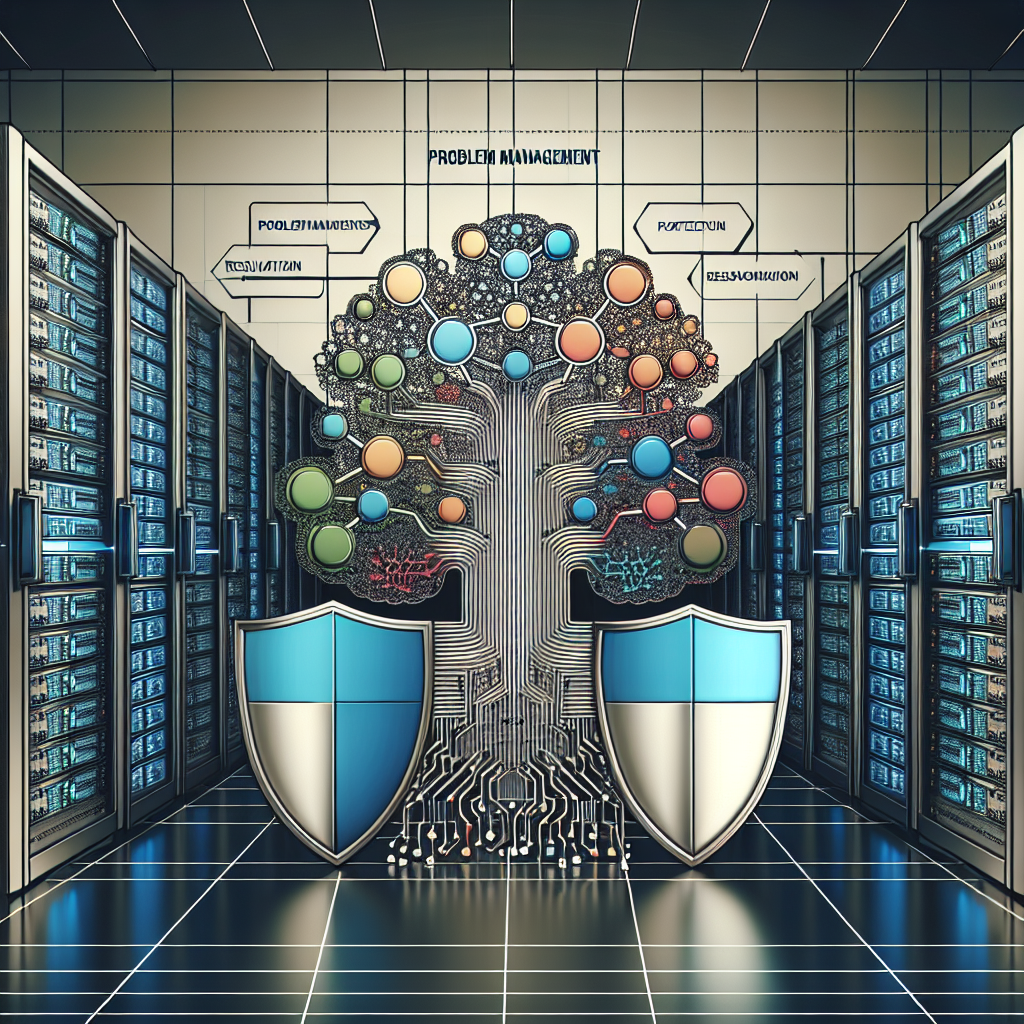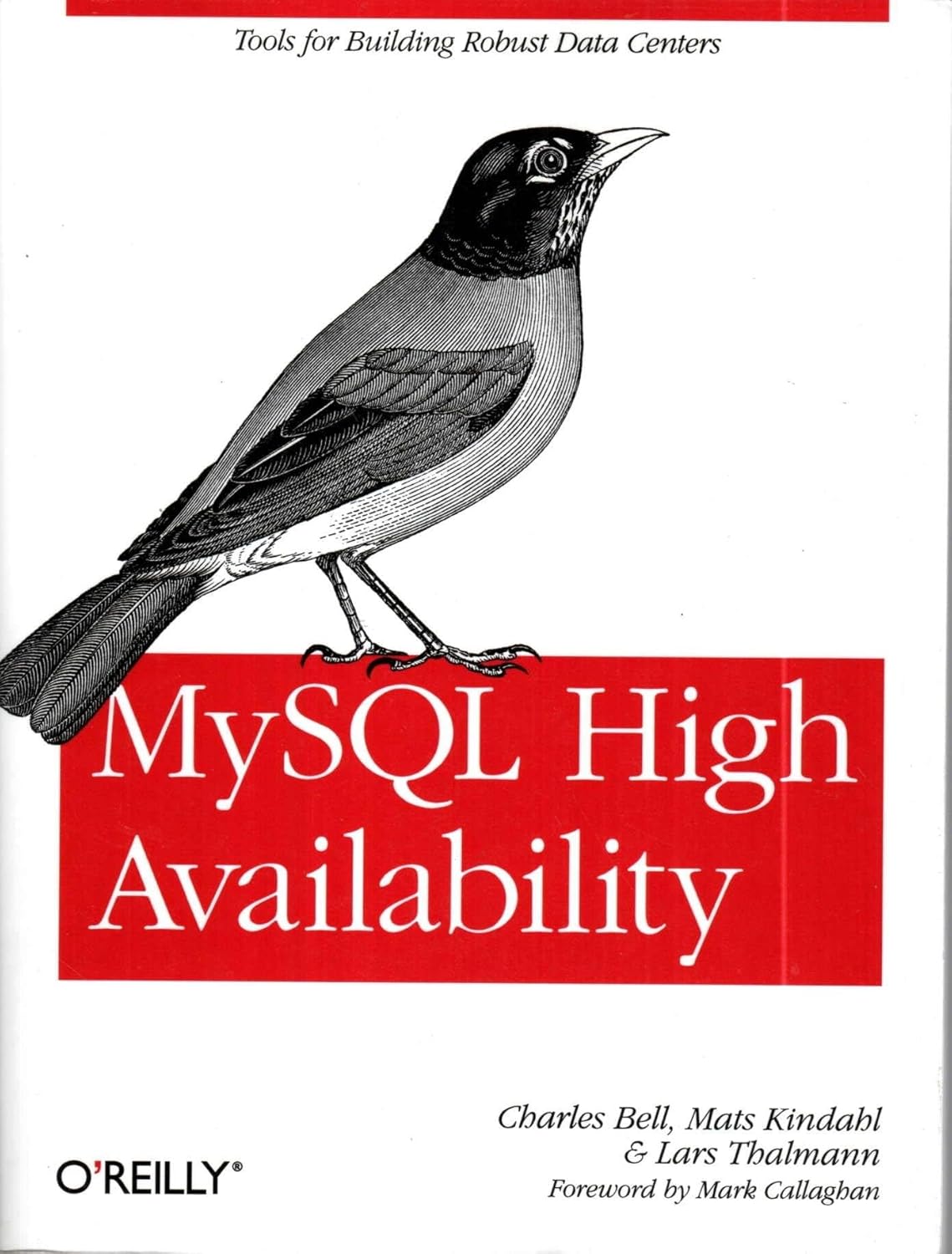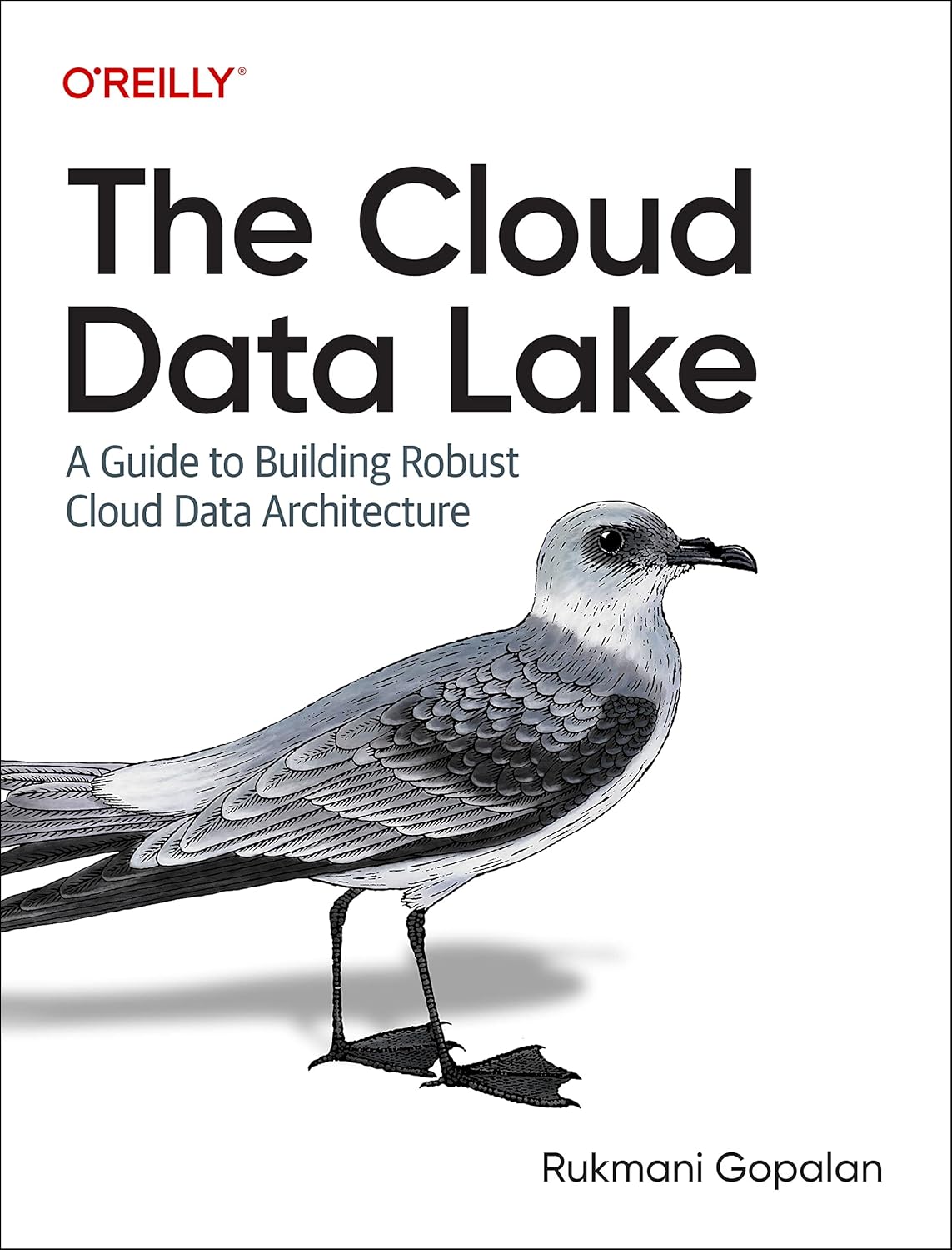Your cart is currently empty!
Tag: Robust

Implementing a Robust Change Management Strategy for Data Centers
Data centers are the heart of any organization’s IT infrastructure, housing critical hardware, software, and data that keep businesses running smoothly. As technology continues to evolve at a rapid pace, data centers must also adapt to new challenges and opportunities. Implementing a robust change management strategy is essential for ensuring the efficiency, security, and reliability of data center operations.Change management is the process of planning, coordinating, and implementing changes to IT systems and infrastructure in a controlled and systematic manner. This process helps minimize disruptions, reduce risks, and ensure that changes are aligned with business objectives. In the context of data centers, change management is particularly important due to the complexity and interdependence of various components, such as servers, storage systems, networking equipment, and applications.
A robust change management strategy for data centers should include the following key elements:
1. Clear policies and procedures: Establishing clear policies and procedures for requesting, approving, and implementing changes is essential for maintaining consistency and accountability. This includes defining roles and responsibilities, documenting change processes, and establishing change control boards to review and approve proposed changes.
2. Risk assessment and impact analysis: Before implementing any changes, it is important to conduct a thorough risk assessment and impact analysis to identify potential risks and assess the potential impact on data center operations. This includes evaluating the potential impact on performance, availability, security, and compliance.
3. Testing and validation: Changes should be thoroughly tested and validated in a controlled environment before being deployed in production. This includes conducting functional testing, performance testing, and security testing to ensure that changes are implemented successfully and do not have any adverse effects on data center operations.
4. Communication and stakeholder engagement: Effective communication is key to ensuring that all stakeholders are informed about upcoming changes and their potential impact. This includes communicating with business units, IT teams, vendors, and other relevant stakeholders to ensure that everyone is on the same page and prepared for any potential disruptions.
5. Continuous monitoring and feedback: Once changes are implemented, it is important to continuously monitor and evaluate their impact on data center operations. This includes collecting feedback from users, monitoring key performance indicators, and making adjustments as needed to optimize performance and address any issues that may arise.
By implementing a robust change management strategy for data centers, organizations can ensure that changes are implemented efficiently, securely, and with minimal disruptions. This helps organizations stay agile and competitive in today’s fast-paced digital landscape, while also ensuring the reliability and security of critical IT infrastructure.

Understanding the Components of a Robust Data Center Network Infrastructure
A data center network infrastructure is a critical component of any organization’s IT infrastructure. It is the backbone that enables the seamless transfer of data between servers, storage devices, and other networking equipment within the data center. Understanding the components of a robust data center network infrastructure is essential for ensuring the reliability, performance, and security of your organization’s data.There are several key components that make up a data center network infrastructure, each playing a crucial role in ensuring the smooth operation of the data center. These components include:
1. Switches and routers: Switches and routers are the primary networking devices used to connect servers, storage devices, and other networking equipment within the data center. Switches are used to connect devices within a local area network (LAN), while routers are used to connect different networks together.
2. Firewalls: Firewalls are essential for securing the data center network infrastructure by monitoring and controlling incoming and outgoing network traffic. They help prevent unauthorized access to the network and protect against cyber threats such as malware and hacking attempts.
3. Load balancers: Load balancers are used to distribute network traffic evenly across multiple servers to ensure optimal performance and availability. They help prevent server overload and improve the overall efficiency of the data center network infrastructure.
4. Storage area networks (SANs): SANs are dedicated networks that connect storage devices such as servers, disk arrays, and tape libraries to the data center network. They provide high-speed access to storage resources and enable efficient data storage and retrieval within the data center.
5. Virtualization technology: Virtualization technology allows organizations to create virtual instances of servers, storage devices, and networking equipment within the data center. This helps improve resource utilization, scalability, and flexibility, and reduces hardware costs.
6. Monitoring and management tools: Monitoring and management tools are essential for monitoring the performance, security, and availability of the data center network infrastructure. These tools provide real-time visibility into network traffic, identify potential issues, and enable administrators to take proactive measures to ensure the smooth operation of the data center.
7. Redundancy and failover mechanisms: Redundancy and failover mechanisms are critical for ensuring high availability and reliability of the data center network infrastructure. Redundant components such as power supplies, network links, and storage devices help prevent single points of failure and ensure continuous operation in the event of a hardware failure.
In conclusion, understanding the components of a robust data center network infrastructure is essential for building a reliable, high-performance, and secure data center environment. By investing in the right networking equipment, security measures, and monitoring tools, organizations can ensure the smooth operation of their data center and protect their valuable data assets.

Improving Data Center Reliability with a Robust Problem Management Framework
In today’s digital age, data centers are at the heart of businesses’ operations, serving as the backbone for storing, processing, and managing vast amounts of data. With the increasing reliance on data centers, ensuring their reliability has become paramount for organizations to avoid costly downtime and maintain seamless operations.One crucial component of maintaining data center reliability is implementing a robust problem management framework. Problem management involves identifying, analyzing, and resolving issues that may impact the performance and availability of a data center. By proactively addressing these issues, organizations can prevent potential disruptions and improve the overall reliability of their data center.
Here are some key strategies for improving data center reliability with a robust problem management framework:
1. Establish a formal problem management process: A well-defined problem management process is essential for effectively managing issues in a data center. This process should outline the steps for identifying, categorizing, prioritizing, and resolving problems, as well as documenting lessons learned for future reference.
2. Implement monitoring and alerting tools: Monitoring and alerting tools can help detect potential issues in real-time and alert IT teams before they escalate into larger problems. By monitoring key performance indicators, such as server capacity, network latency, and storage availability, organizations can proactively address issues before they impact the data center’s reliability.
3. Conduct root cause analysis: When problems arise, it’s important to conduct a thorough root cause analysis to identify the underlying issues that led to the problem. By understanding the root cause, organizations can implement permanent solutions to prevent similar issues from occurring in the future.
4. Implement preventive maintenance practices: Regular maintenance and proactive monitoring of data center infrastructure can help prevent potential issues before they impact operations. This includes performing routine inspections, updating software and firmware, and replacing aging hardware components to ensure optimal performance and reliability.
5. Establish a culture of continuous improvement: To maintain data center reliability in the long term, organizations should foster a culture of continuous improvement within their IT teams. Encouraging collaboration, knowledge sharing, and ongoing training can help teams stay ahead of emerging issues and continuously enhance the reliability of the data center.
In conclusion, improving data center reliability requires a proactive and systematic approach to problem management. By establishing a formal problem management process, implementing monitoring and alerting tools, conducting root cause analysis, implementing preventive maintenance practices, and fostering a culture of continuous improvement, organizations can enhance the reliability of their data center and ensure seamless operations for their business.

MySQL High Availability: Tools for Building Robust Data Centers
Price:$49.99– $39.90
(as of Dec 17,2024 09:17:48 UTC – Details)
Publisher : O’Reilly Media; 1st edition (July 16, 2010)
Language : English
Paperback : 598 pages
ISBN-10 : 0596807309
ISBN-13 : 978-0596807306
Item Weight : 2.18 pounds
Dimensions : 6.89 x 1.31 x 9.02 inches
MySQL High Availability: Tools for Building Robust Data CentersIn today’s fast-paced digital world, downtime is simply not an option for organizations relying on MySQL databases. High availability is crucial for ensuring that your data center remains up and running, even in the face of hardware failures, network issues, or other disruptions.
To achieve high availability for your MySQL databases, it’s essential to implement tools and technologies that can help you build a robust data center infrastructure. Here are some key tools that you can use to ensure that your MySQL databases are always available:
1. MySQL Replication: MySQL replication is a built-in feature that allows you to create multiple copies of your data across different servers. By setting up replication, you can ensure that your data is always available, even if one server goes down. Replication can also be used to offload read-heavy workloads from your primary database server, improving performance and scalability.
2. MySQL Cluster: MySQL Cluster is a distributed database solution that provides high availability and scalability for MySQL databases. It uses a shared-nothing architecture and synchronous replication to ensure that your data is always available, even in the event of node failures. MySQL Cluster is ideal for mission-critical applications that require high availability and performance.
3. MySQL Router: MySQL Router is a lightweight middleware component that can be used to automatically route client requests to the most appropriate MySQL server in a high availability setup. It provides load balancing, failover, and monitoring capabilities, helping you to ensure that your MySQL databases remain available and responsive at all times.
4. MySQL Enterprise Backup: MySQL Enterprise Backup is a commercial backup solution that provides advanced backup and recovery capabilities for MySQL databases. It allows you to create full and incremental backups, perform point-in-time recovery, and automate backup tasks to ensure that your data is always protected and available.
By leveraging these tools and technologies, you can build a robust data center infrastructure that ensures high availability for your MySQL databases. Whether you’re running a small business website or a large-scale enterprise application, investing in high availability solutions for your MySQL databases is essential for ensuring that your data remains accessible and secure at all times.
#MySQL #High #Availability #Tools #Building #Robust #Data #Centers
Building a Robust Incident Management Plan for Your Data Center
Data centers are critical components of any organization’s IT infrastructure, housing and managing large amounts of sensitive and valuable data. With cyber threats becoming increasingly sophisticated and prevalent, it is more important than ever for data center operators to have a robust incident management plan in place to effectively respond to and mitigate potential security incidents.Building a robust incident management plan for your data center involves several key steps and considerations. Here are some best practices to help you develop an effective plan:
1. Conduct a thorough risk assessment: Start by identifying and evaluating potential risks and vulnerabilities in your data center environment. This includes conducting a comprehensive security audit, identifying critical assets and systems, and assessing potential threats and their likelihood of occurrence.
2. Define incident response roles and responsibilities: Clearly define the roles and responsibilities of key personnel involved in incident response, including IT staff, security teams, and management. Establish clear lines of communication and escalation procedures to ensure a coordinated and effective response to security incidents.
3. Develop incident response procedures: Create detailed procedures for detecting, analyzing, and responding to security incidents in your data center. This should include steps for identifying and containing the incident, investigating the root cause, and implementing corrective actions to prevent future incidents.
4. Implement monitoring and detection tools: Deploy advanced monitoring and detection tools to proactively identify and respond to security incidents in real-time. This includes intrusion detection systems, security information and event management (SIEM) solutions, and endpoint detection and response (EDR) tools.
5. Conduct regular training and exercises: Train your staff on incident response procedures and conduct regular tabletop exercises to test and validate your incident management plan. This will help ensure that your team is prepared to respond effectively to security incidents when they occur.
6. Establish communication protocols: Develop clear communication protocols for notifying key stakeholders, such as senior management, legal counsel, and regulatory authorities, in the event of a security incident. This will help ensure a coordinated and timely response to the incident.
7. Continuously review and update your incident management plan: Regularly review and update your incident management plan to incorporate lessons learned from past incidents, changes in the threat landscape, and updates to your data center environment. This will help ensure that your plan remains effective and up-to-date.
In conclusion, building a robust incident management plan for your data center is essential to protecting your organization’s valuable data and ensuring business continuity in the face of security threats. By following these best practices and taking a proactive approach to incident response, you can strengthen your data center’s security posture and minimize the impact of security incidents on your organization.

Improving Data Center Operations with Robust Documentation Practices
Data centers are the backbone of many organizations, housing critical IT infrastructure and data that are essential for their daily operations. Ensuring the smooth and efficient functioning of a data center is crucial for businesses to maintain productivity and avoid costly downtime. One way to improve data center operations is through robust documentation practices.Documentation is a key component of managing a data center effectively. It provides a comprehensive record of the hardware, software, configurations, and processes that are essential for the operation of the data center. By documenting all aspects of the data center environment, IT teams can easily troubleshoot issues, track changes, and ensure consistency across the infrastructure.
Here are some ways in which robust documentation practices can help improve data center operations:
1. Improved troubleshooting: When issues arise in the data center, having detailed documentation can help IT teams quickly identify and resolve the problem. By documenting configurations, network diagrams, and processes, teams can easily pinpoint the root cause of issues and take appropriate action to resolve them.
2. Change management: Keeping track of changes made to the data center environment is essential for maintaining stability and security. With proper documentation, IT teams can track all changes, including software updates, hardware upgrades, and configuration changes, ensuring that they are implemented correctly and do not cause any disruptions.
3. Consistency and standardization: Documenting standard operating procedures (SOPs) and best practices ensures that all IT staff follow the same procedures when managing the data center. This helps maintain consistency and reduces the risk of errors or misconfigurations that can lead to downtime.
4. Knowledge transfer: As IT staff come and go, having comprehensive documentation in place ensures that knowledge is not lost when employees leave the organization. New staff can quickly get up to speed on data center operations by referring to the documentation, reducing the impact of staff turnover on the business.
5. Compliance and audit readiness: Many industries have strict regulatory requirements for data security and compliance. By maintaining detailed documentation of data center operations, organizations can demonstrate compliance with regulatory standards and be prepared for audits.
In conclusion, robust documentation practices are essential for improving data center operations. By documenting configurations, processes, and procedures, IT teams can enhance troubleshooting, change management, consistency, knowledge transfer, and compliance. Investing time and resources in creating and maintaining comprehensive documentation will ultimately lead to a more efficient and reliable data center environment.

The Cloud Data Lake: A Guide to Building Robust Cloud Data Architecture
Price:$65.99– $41.24
(as of Dec 17,2024 04:36:14 UTC – Details)From the brand


Explore Cloud & Microservices


Sharing the knowledge of experts
O’Reilly’s mission is to change the world by sharing the knowledge of innovators. For over 40 years, we’ve inspired companies and individuals to do new things (and do them better) by providing the skills and understanding that are necessary for success.
Our customers are hungry to build the innovations that propel the world forward. And we help them do just that.
Publisher : O’Reilly Media; 1st edition (January 17, 2023)
Language : English
Paperback : 244 pages
ISBN-10 : 1098116585
ISBN-13 : 978-1098116583
Item Weight : 15.2 ounces
Dimensions : 6.9 x 0.6 x 9.1 inches
The Cloud Data Lake: A Guide to Building Robust Cloud Data ArchitectureIn today’s digital age, data is king. Companies are constantly collecting and analyzing data to gain valuable insights and make informed business decisions. With the rise of big data, traditional data storage systems are no longer sufficient to handle the massive amounts of data being generated.
Enter the cloud data lake. A cloud data lake is a centralized repository that allows organizations to store all their structured and unstructured data at any scale. By leveraging cloud storage and computing resources, companies can build a robust data architecture that can support their growing data needs.
But building a cloud data lake is not as simple as just dumping all your data into a storage bucket. It requires careful planning and architecture design to ensure that your data lake is secure, scalable, and efficient. Here are some key steps to building a robust cloud data architecture:
1. Define your data sources: Before building your data lake, you need to identify all the data sources that you want to ingest into the lake. This can include data from your CRM system, website analytics, social media platforms, and more.
2. Design your data lake architecture: Once you have identified your data sources, you need to design the architecture of your data lake. This includes deciding on the type of storage (object storage vs. file storage), data ingestion processes, data processing frameworks, and data governance policies.
3. Implement data security measures: Data security is a top priority when building a data lake. Make sure to implement encryption, access controls, and monitoring tools to protect your data from unauthorized access.
4. Optimize data processing: To make the most of your data lake, you need to optimize your data processing workflows. This can include using data pipelines, ETL tools, and data processing frameworks like Apache Spark or Hadoop.
5. Monitor and optimize performance: Regularly monitor the performance of your data lake and make optimizations as needed. This can include scaling up resources, fine-tuning data processing workflows, and optimizing storage configurations.
By following these steps, you can build a robust cloud data architecture that can support your organization’s data needs now and into the future. A well-designed data lake can unlock valuable insights from your data and give you a competitive edge in today’s data-driven world.
#Cloud #Data #Lake #Guide #Building #Robust #Cloud #Data #Architecture
Securing Your Data Assets: The Benefits of Investing in Robust Data Center Security Systems
In today’s digital age, data has become one of the most valuable assets for businesses. From customer information to financial records, companies rely on their data to make informed decisions and drive growth. However, with the increasing amount of data being generated and stored, the risk of data breaches and cyber attacks is also on the rise.Securing your data assets is crucial to protecting your business and maintaining the trust of your customers. Investing in robust data center security systems is one of the best ways to ensure the safety and integrity of your data. Here are some of the key benefits of investing in a strong data center security system:
1. Protection against cyber attacks: Cyber attacks are becoming more sophisticated and prevalent, posing a serious threat to businesses of all sizes. A robust data center security system can help prevent unauthorized access to your data and protect against malware, ransomware, and other cyber threats.
2. Compliance with regulations: Many industries have strict regulations governing the protection of data, such as the Health Insurance Portability and Accountability Act (HIPAA) for healthcare organizations and the General Data Protection Regulation (GDPR) for businesses operating in the European Union. Investing in a data center security system can help ensure that your business remains compliant with these regulations and avoids costly fines and penalties.
3. Disaster recovery and business continuity: Data loss can have devastating consequences for businesses, leading to downtime, lost revenue, and damage to your reputation. A robust data center security system can help prevent data loss and ensure that your business can quickly recover from any potential disasters, such as natural disasters, hardware failures, or cyber attacks.
4. Improved performance and scalability: A well-designed data center security system can help improve the performance and scalability of your data infrastructure. By implementing advanced security measures, such as encryption, access controls, and monitoring tools, you can enhance the efficiency and reliability of your data center operations.
5. Enhanced customer trust: In today’s competitive marketplace, customers are increasingly concerned about the security and privacy of their data. By investing in a robust data center security system, you can demonstrate to your customers that you take their data protection seriously and build trust in your brand.
Overall, investing in a robust data center security system is essential for protecting your data assets and safeguarding the future of your business. By implementing advanced security measures, you can minimize the risk of data breaches, ensure compliance with regulations, and enhance the trust of your customers. Don’t wait until it’s too late – prioritize data security today and reap the benefits of a secure and resilient data infrastructure.

Amazon Fire 10 HD Kids tablet (newest model) ages 3-7 | Bright 10.1″ HD screen with included ad-free and exclusive content, robust parental controls, 13-hr battery, 32 GB, Pink
Price:$189.99– $109.99
(as of Dec 17,2024 02:20:29 UTC – Details)
SAVE UP TO $70 — A fully featured tablet (not a toy) with a wide, 10.1″ 1080p Full HD display for kids ages 3-7 includes comprehensive parental controls, 1 year of Amazon Kids+, a kid-proof case, and a 2-year worry-free guarantee.
2-YEAR WORRY-FREE GUARANTEE INCLUDED — If it breaks, return it and we’ll replace it for free.
ENTERTAINMENT KIDS LOVE — Includes a 1-year subscription of Amazon Kids+, an award winning subscription featuring thousands of ad-free books, games, videos, apps, from brands like Disney, Blippi’s Treehouse, and LEGO. After 1 year, your subscription will automatically renew every month starting at just $5.99/month plus applicable tax. You may cancel any time by visiting the Amazon Parent Dashboard or contacting Customer Service.
ROBUST PARENTAL CONTROLS — Manage everything from your phone, including screen-time limits, pausing or resuming the device and approving requests from the app store, like downloading Netflix and Disney+.
GROWS WITH KIDS — Use filters to adjust the content they consume to match their age, so they can enjoy this tablet for years to come.
SAFETY FIRST — We partner with leading family trust experts to provide a safer digital experience for kids.
KEEPS UP WITH KIDS — Use it anywhere—the 13-hour battery life can handle it. 32 GB of storage and up to 1 TB of expandable storage (sold separately) leave room for their books, movies, and more while on the go.
EASY TO ENJOY — Their favorite shows shine on the large 10.1″ 1080p Full HD display, and everything runs seamlessly thanks to 3 GB RAM and 25% faster performance than the previous generation.
LOVED BY PARENTS — The 11th generation Fire HD 10 Kids tablet has thousands of reviews with a four-star rating or higher.Customers say
Customers find the tablet functional and kid-friendly. They say it works well, is easy to use, and keeps kids entertained with educational apps and games. Many consider it a good value for the price, especially with the included one-year subscription. The screen size is also appreciated. However, opinions differ on durability, battery life, and app selection.
AI-generated from the text of customer reviews
Introducing the newest model of the Amazon Fire 10 HD Kids tablet, designed specifically for kids ages 3-7! With a bright 10.1″ HD screen, this tablet provides a vibrant and engaging viewing experience for young children.The Amazon Fire 10 HD Kids tablet comes with ad-free and exclusive content, including educational games, videos, and books, to keep your little ones entertained and learning. With robust parental controls, you can easily manage screen time limits, set educational goals, and filter content to ensure a safe and age-appropriate experience for your child.
This tablet also boasts a long-lasting 13-hour battery life, so your kids can enjoy hours of entertainment without interruption. With 32 GB of storage, there’s plenty of room for all their favorite apps, games, and videos.
And let’s not forget the fun and stylish Pink color option, perfect for adding a pop of color to your child’s tech collection.
Don’t miss out on the Amazon Fire 10 HD Kids tablet – the perfect device to keep your little ones entertained and engaged!
#Amazon #Fire #Kids #tablet #newest #model #ages #Bright #screen #included #adfree #exclusive #content #robust #parental #controls #13hr #battery #Pink
Mitigating Risks with a Robust Data Center Change Management Plan
In today’s digital age, data centers play a crucial role in storing and processing vast amounts of information for businesses. With the rapid pace of technological advancements and the increasing reliance on data, it is essential for organizations to have a solid data center change management plan in place to mitigate risks and ensure smooth operations.Data center change management refers to the process of planning, implementing, and controlling changes to the infrastructure, applications, and services within a data center environment. This includes everything from hardware upgrades and software updates to network configuration changes and security patches.
One of the key reasons why having a robust data center change management plan is important is to minimize the risk of downtime and disruptions. Any changes made to the data center environment can potentially impact the availability and performance of critical systems and applications. By following a structured change management process, organizations can identify potential risks, assess the impact of proposed changes, and implement controls to mitigate those risks.
In addition to reducing the risk of downtime, a well-defined change management plan can also help organizations comply with industry regulations and best practices. Many industries, such as healthcare and finance, have strict data security and privacy requirements that must be adhered to. By implementing a change management plan that includes thorough testing and documentation processes, organizations can demonstrate compliance with these regulations and ensure the integrity and confidentiality of their data.
Furthermore, a data center change management plan can improve overall efficiency and productivity within an organization. By standardizing the process for making changes to the data center environment, organizations can streamline operations, reduce errors, and increase the speed at which changes are implemented. This can ultimately lead to cost savings and improved service delivery for customers.
To develop a successful data center change management plan, organizations should consider the following key components:
1. Establishing clear roles and responsibilities: Assigning specific roles and responsibilities to team members involved in the change management process will help ensure accountability and streamline communication.
2. Conducting thorough risk assessments: Before implementing any changes, organizations should assess the potential risks and impacts on the data center environment. This can help prioritize changes and allocate resources effectively.
3. Implementing a standardized change control process: Having a structured process in place for requesting, reviewing, approving, and implementing changes will help organizations maintain control over the data center environment and prevent unauthorized changes.
4. Documenting and tracking changes: Keeping detailed records of all changes made to the data center environment, including the reasons for the change, testing results, and approvals, will help organizations track and monitor the impact of changes over time.
In conclusion, having a robust data center change management plan is essential for organizations looking to mitigate risks, ensure compliance, and improve efficiency within their data center environment. By following best practices and implementing a structured change management process, organizations can minimize downtime, enhance security, and optimize their data center operations for future growth and success.
